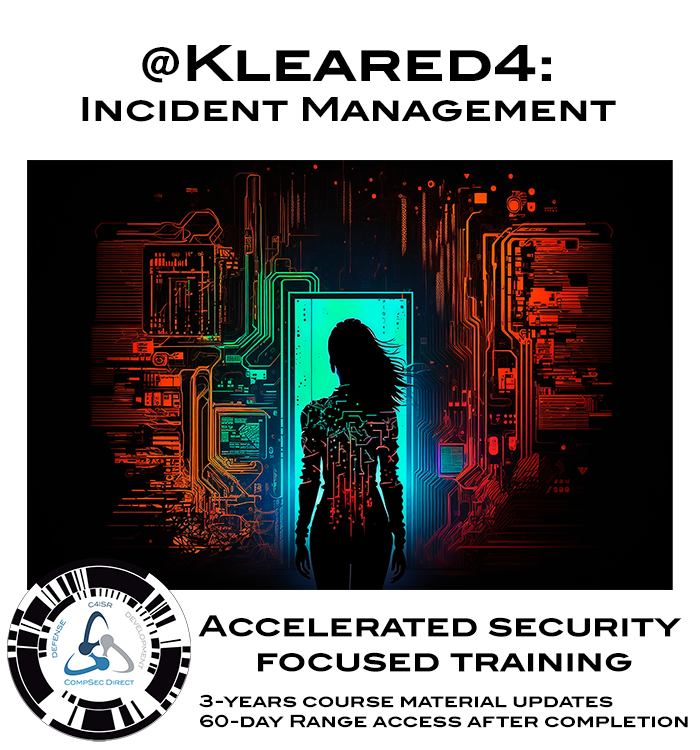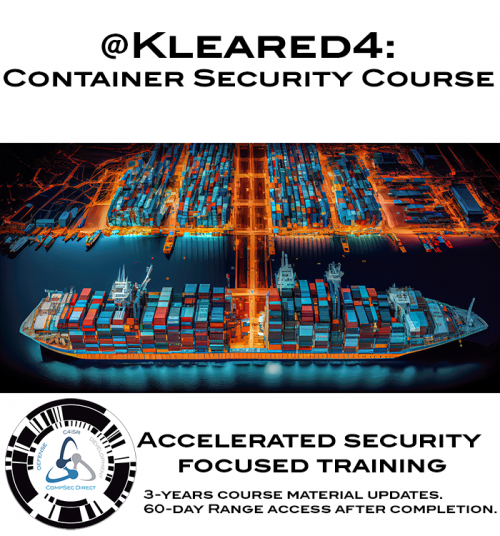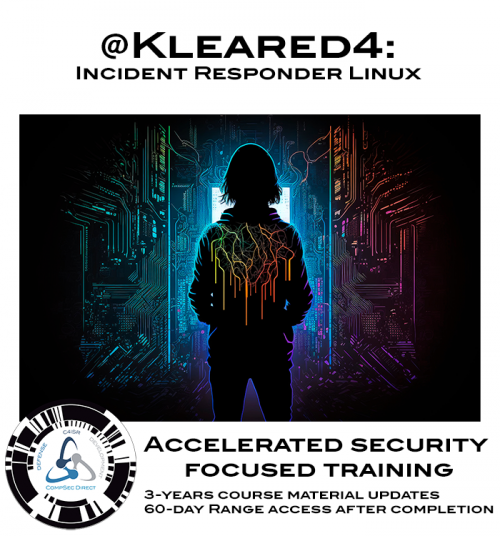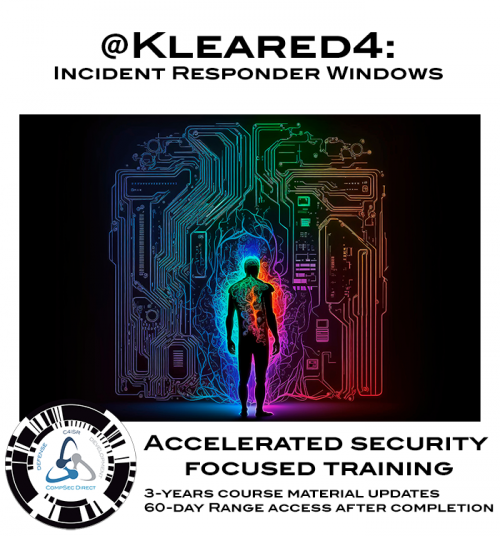Description
This course covers the planning, coordination, and remediation efforts that incident response managers must perform to ensure smooth and consolidated incident response activities. Incident response leaders that take this course will have access to updated plans and mitigations strategies for continuous awareness after course completion.
Learning Objectives
Participants of this course will learn how-to:
1. Planning and responding to unexpected outages
2. Planning and responding to acts of sabotage
3. Planning and responding to malicious insiders
4. Planning and responding to ransomware
5. Coordination and mitigations strategies
6. Strategic decision-making
7. Modern incident response and remediation procedures for FY 2026
Who Should Attend
This course is ideal for professionals who lead or manage cybersecurity and IT operations, including:
-
IT Managers and Directors overseeing security incident planning and response.
-
Chief Information Security Officers (CISOs) and senior Security Leaders responsible for organizational cybersecurity strategy.
-
Security Operations Center (SOC) Managers and Incident Response Team Leads coordinating technical response efforts.
-
Risk Management and Compliance Officers in need of up-to-date incident handling training to meet regulatory and business continuity requirements.
-
Public Sector IT Security Personnel (federal, state, or local) and Private Sector Security Managers aiming to align with NIST standards and improve their incident management programs.
Overall Proficiency Level: 1 – Basic
Target audience: IT managers, CISOs, and cybersecurity team leaders in both public and private sector.
DCWF Roles: 311, 312, 722, 723, 732, 801, 802, 803, 804, 805, 806, 901
Course Catalog Number: K4IM
Course Prerequisites:
- Familiarity or desire to understand incident response management
- Familiarity with IT systems and resource management
- Modern operating system with web-browser
- Stable internet connectivity
- Microsoft Teams account (free accounts available)
Training Purpose: Functional Development, Management Development
Delivery Method: Online, Instructor-Led, Remote
Course Length: 1 Day
Languages: English or Spanish options for instruction. Please select correct date and language for course instruction.
Benefits: 3-years course material updates. 60 day access to Kleared4 after course completion.
Standard support over business hours EST/EDT 0800-1700 8am-5pm
Government PO accepted.
10% discounts available for groups of 10 participants or more.
8 hours of instruction with continuing education certificate upon complete attendance
Course Syllabus
Course Structure: The curriculum follows the cyber incident lifecycle, structured around NIST’s incident response phases and the CSF 2.0 Functions. Key topics and process stages include:
-
Preparation & Planning: Establishing an incident response capability and policy framework. Topics include building the incident response team, defining roles and communication plans, and implementing preventive controls (aligning with CSF Govern/Identify/Protect functions).
-
Detection & Analysis: Monitoring networks and systems for anomalies, detecting potential incidents, and analyzing data to confirm and scope incidents. Covers using log management tools and techniques (per NIST SP 800-92) to identify indicators of compromise, triage alerts, and document incidents.
-
Containment, Eradication & Recovery: Strategies to limit damage during an incident (isolating affected systems, blocking attacks), eliminate the threat (removing malware, closing vulnerabilities), and safely restore operations. Aligns with CSF Respond/Recover functions and includes guidance on evidence preservation and system cleanup.
-
Post-Incident Activity: Incident reporting, root cause analysis, and lessons learned processes. Learn how to conduct post-incident reviews to derive actionable improvements, update response plans, and enhance organizational resilience through continuous improvement of controls.
8-Hour Agenda (One-Day Course):
-
9:00 – 9:30 AM: Welcome & Overview – Course introduction, objectives, and an overview of incident management frameworks (NIST SP 800-61r3 and CSF 2.0 context).
-
9:30 – 10:45 AM: Lecture 1: Preparation & Prevention – Building your incident response plan and team. Establishing policies, roles, communication strategies, and preventive measures (governance, training, and controls implementation).
-
10:45 – 12:00 PM: Lecture 2: Detection & Analysis – Identifying indicators of compromise and analyzing events. Utilizing security monitoring tools and log analysis techniques to detect incidents early. Introduction to incident classification and notification procedures.
-
12:00 – 12:45 PM: Lab 1: Threat Detection Exercise – Hands-on practice with analyzing sample logs and alerts to recognize a potential cyber incident in progress. (Lab environment accessible for 60 days post-course.)
-
12:45 – 1:30 PM: Lunch Break (on your own).
-
1:30 – 2:30 PM: Lecture 3: Containment & Eradication – Containment strategies to isolate affected systems and stop attack spread. Eradication steps to remove malware or intruders. Guidance on working with cross-functional teams (IT, legal, PR) during high-severity incidents.
-
2:30 – 3:15 PM: Lecture 4: Recovery & Post-Incident – Recovery planning to safely restore systems and data integrity. Post-incident activities including incident reporting, conducting a lessons-learned debrief, and updating response plans for continuous improvement.
-
3:15 – 4:15 PM: Lab 2: Incident Response Simulation – Live simulated cyber incident scenario. Participants will apply containment and recovery techniques in a controlled environment, working through an incident from detection to post-mortem. (Lab environment accessible for 60 days post-course.)
-
4:15 – 4:30 PM: Conclusion & Next Steps – Course wrap-up, Q&A session, and resources for further learning (mapping course content back to NIST CSF and SP 800-61r3 for on-the-job application).
Note: Throughout the day, short breaks will be provided as needed. All participants will receive digital course materials and templates (IR plan outline, communication checklist, etc.) for use in their organizations. Lab access remains available for 60 days so you can continue to practice and revisit the exercises.





